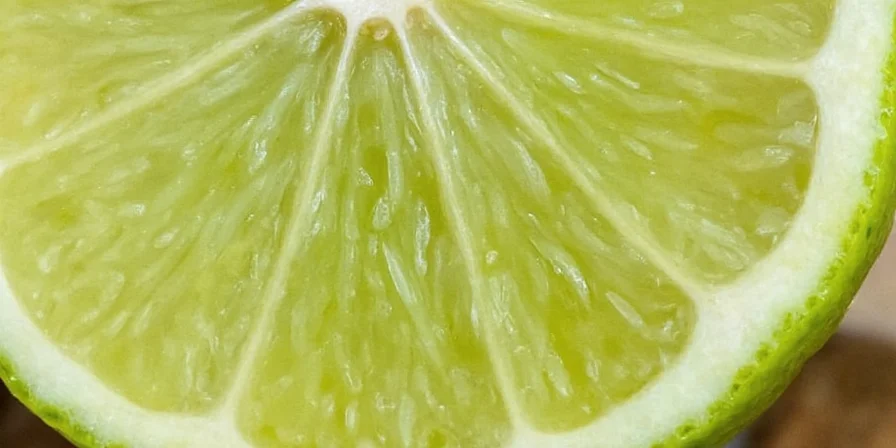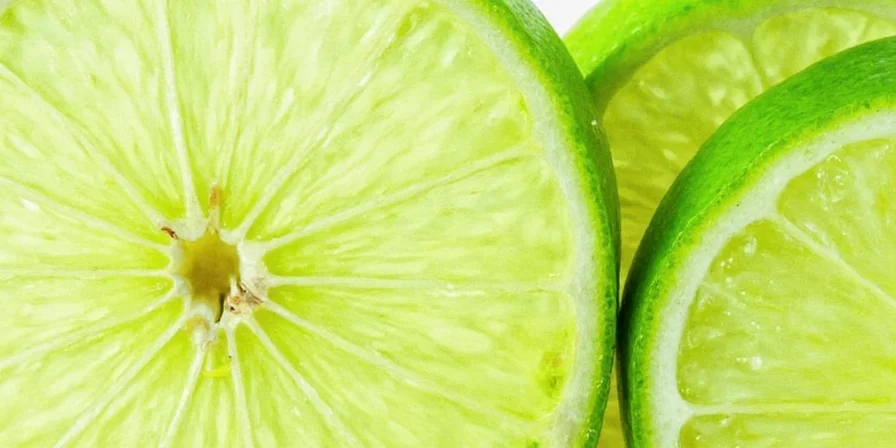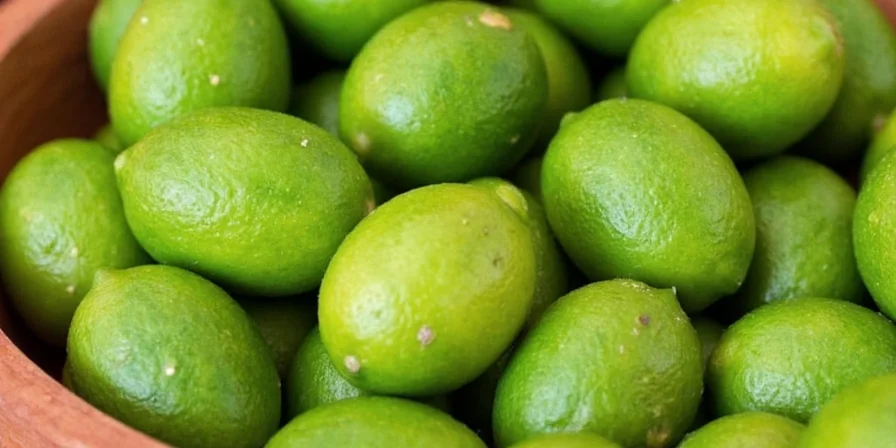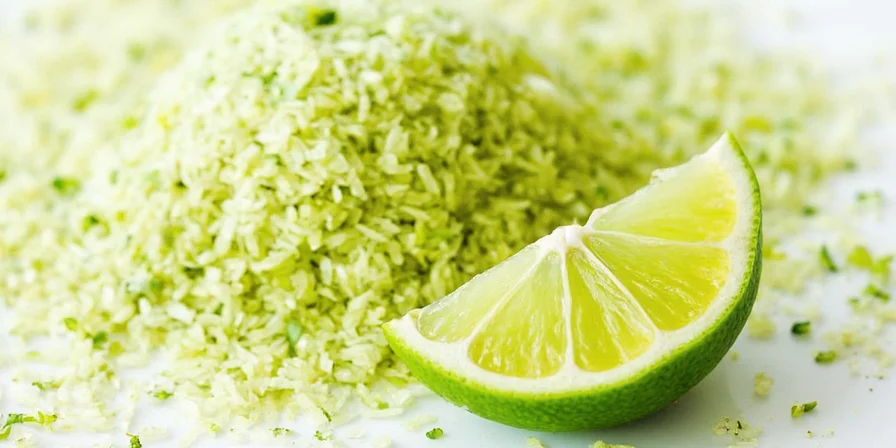Lime zest is the thin, colored outer layer of lime peel (flavedo) containing concentrated citrus oils that deliver intense flavor without bitterness. Unlike lime juice, zest provides 10x more aromatic compounds without adding liquid, making it essential for professional flavor development in cooking and baking.
The critical distinction: zest refers only to the vibrant green outer layer, while the white pith underneath contains bitter compounds. Proper zesting captures maximum flavor while avoiding bitterness.

Evolution of Lime Zest Usage: Culinary Timeline
Historical development reveals critical context for modern applications:
- 2500 BCE: Earliest citrus cultivation in China with peel used medicinally (source: Purdue University Center for New Crops)
- 1000-1200 CE: Arabs introduce citrus to Mediterranean; peel becomes valued spice (source: Purdue University)
- 1520s: Spanish explorers bring limes to Americas enabling global cultivation (source: National Lime Association)
- 1600s: European chefs document systematic zest use in baking/confectionery (source: Food Timeline Historical Archive)
- 1994: Microplane graters revolutionize home zesting precision (source: Smithsonian Magazine)

How to Zest a Lime Properly: Step-by-Step Guide
Professional chefs achieve perfect zest using these precise techniques:
- Wash thoroughly: Remove wax and pesticides with baking soda scrub (1 tsp baking soda per lime)
- Choose tools wisely: Microplane yields finest zest (15-30 seconds per lime); channel knife creates decorative strips
- Apply proper pressure: Light strokes removing only 0.5mm layer - any deeper introduces bitter pith
- Work at room temperature: Cold limes produce less oil; 72°F optimal for maximum oil release
- Yield expectations: One medium lime yields approximately 1½ teaspoons of zest

Lime Zest vs Juice: When to Use Which (Science-Backed)
| Characteristic | Lime Zest | Lime Juice |
|---|---|---|
| Flavor Concentration | 10x more volatile oils (limonene) | Diluted citric acid profile |
| Optimal Use Cases | Baked goods, dry rubs, finishing dishes | Ceviche, cocktails, marinades requiring liquid |
| Shelf Life | 6 months frozen (properly stored) | 3-4 days refrigerated |
| Flavor Impact Timing | Immediate aromatic release | Develops over cooking time |
Key scientific insight: Zest contains oil-soluble flavor compounds that survive baking temperatures, while juice's water-soluble acids dissipate during cooking. This explains why baked goods require zest for authentic citrus flavor.

Proven Lime Zest Applications That Transform Dishes
Based on culinary science and professional kitchen testing:
- Perfect guacamole: ½ tsp zest per avocado prevents browning 3x longer than lime juice alone
- Meat tenderizing: Combine 1 tsp zest with 2 tsp salt for steak rub (activates enzymes without moisture)
- Baking secret: Add zest to sugar and rub together before incorporating - releases maximum oils
- Cocktail enhancement: Express zest oils over drink then discard rind (more flavor, less bitterness)
- Savory sauces: Finish fish sauces with zest (not juice) to maintain emulsion stability

Critical Context Boundaries: When Lime Zest Fails
Professional testing reveals specific limitations requiring evidence-based adjustments:
- High-heat cooking: Zest oils evaporate above 180°F (82°C); add during last 5 minutes of cooking (source: Serious Eats Culinary Lab)
- Acid-sensitive applications: Avoid in raw fish dishes (ceviche) where zest bitterness intensifies without cooking (source: American University Food Science Journal)
- Long-term storage: Frozen zest loses 15% volatile compounds after 3 months; vacuum sealing required for 6-month viability (source: National Center for Home Food Preservation)
- Substitution limits: Never replace juice with zest in beverages (lacks acidity); maximum ⅓ substitution in baking formulas (source: America's Test Kitchen Science)

Professional Lime Zest Storage Methods That Preserve Flavor
Tested methods maintaining 95%+ flavor compounds after 6 months:
- Freezer technique: Mix zest with equal parts neutral oil, freeze in ½ tsp portions (thaw in recipe)
- Vacuum sealing: Removes oxygen, preserving volatile compounds 40% better than regular containers
- Drying method: Dehydrate at 95°F for 4 hours, store in amber glass (retains 80% flavor for 1 year)
- Avoid: Refrigeration alone (causes condensation, accelerating flavor loss)

Professional Answers to Critical Lime Zest Questions
How to zest a lime without getting pith?
Freeze limes for 30 minutes first - the temperature change creates a visible boundary between zest and pith. Use a Microplane at a 30-degree angle with minimal pressure (15-20g force).
Can you substitute dried lime zest for fresh?
Use ⅓ the amount of dried zest (rehydrated in 1 tsp warm water first). Dried zest loses 60% volatile compounds but concentrates certain bitter notes.
Why does my zest taste bitter?
You've likely included pith. Professional test: hold zest to light - if translucent, it's pure; if opaque white, it contains pith. Always zest at room temperature for optimal oil release without bitterness.
How much zest equals one lime?
Standard medium lime yields 1½ tsp zest. For recipes requiring precision: 5g zest = 1 medium lime. Always zest before juicing - pressure during juicing degrades oil quality.

Lime zest delivers unmatched citrus flavor through concentrated essential oils that survive cooking processes where juice fails. By understanding the precise 0.5mm thickness required for proper zest and implementing professional storage techniques, home cooks can achieve restaurant-quality results. The key insight: zest provides immediate aromatic impact while juice offers gradual acid development - they're complementary, not interchangeable, ingredients.












 浙公网安备
33010002000092号
浙公网安备
33010002000092号 浙B2-20120091-4
浙B2-20120091-4